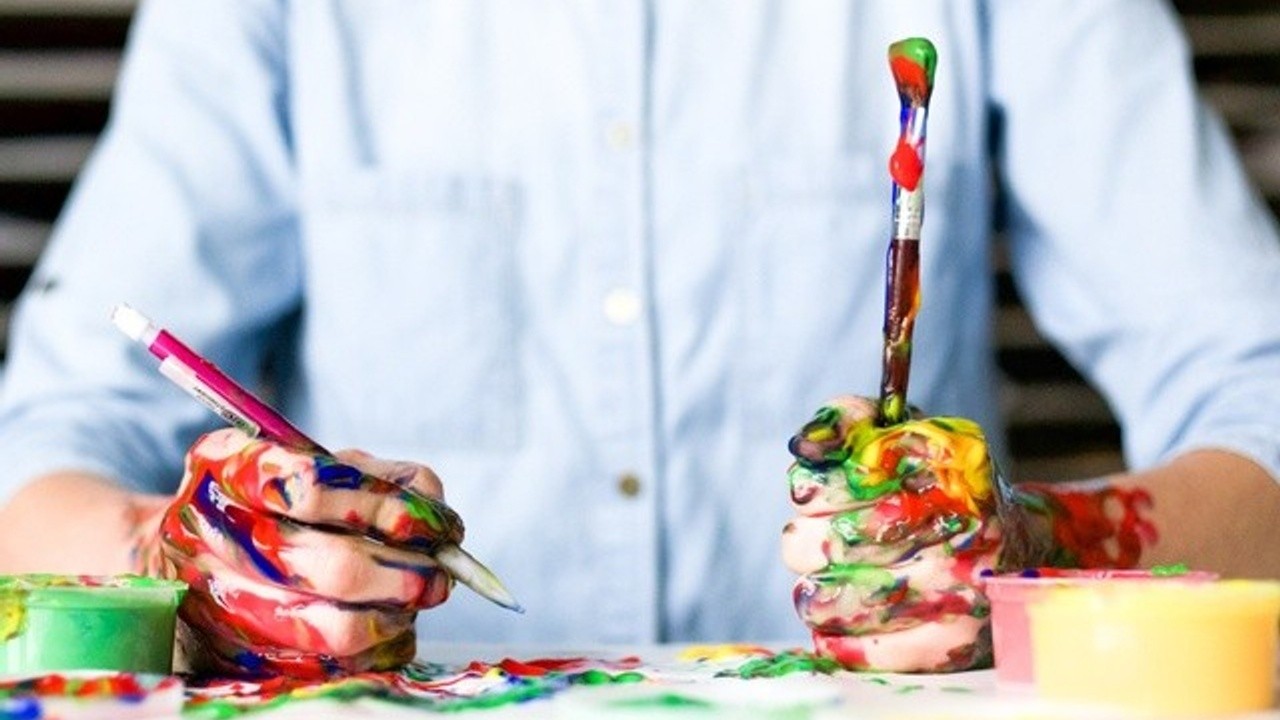The age-old question for aspiring artists: Do I Need To Learn Drawing Before Painting? While some argue it’s essential, others believe it’s unnecessary. Let’s explore both sides of this debate and help you determine the best path for your artistic journey.
Drawing vs. Painting: Understanding the Core Differences
Although both are visual art forms, drawing and painting utilize different tools and techniques. Drawing typically involves lines to create shapes and outlines, often focusing on realism and detail using tools like pencils, charcoal, or pens. Painting, on the other hand, uses pigments to create form and color on a surface, allowing for a wider range of styles from realism to abstraction, employing tools like brushes, palette knives, and sponges.  Painting vs drawing
Painting vs drawing
Drawing emphasizes line and shape, while painting emphasizes color and form. This core distinction leads to varied approaches and outcomes. Drawing often serves as a foundation for understanding proportion, perspective, and light and shadow, crucial elements in painting as well.
The Argument for Drawing First
Many art instructors advocate for learning to draw before painting. This approach offers several benefits:
- Developing Fundamental Skills: Drawing hones foundational skills like observation, hand-eye coordination, and understanding composition. These skills translate directly to painting, enabling better control and accuracy.
- Understanding Form and Value: Drawing trains the eye to see and interpret shapes, forms, light, and shadow, laying the groundwork for depicting three-dimensional objects convincingly in paint.
- Building Confidence: Mastering drawing provides a solid foundation and builds confidence before tackling the more complex medium of paint. It allows for experimentation and mistakes without the permanence of paint.
Painting Without Drawing: Is It Possible?
While drawing provides a strong foundation, it isn’t strictly mandatory for painting. Several alternative methods can help transfer an image to canvas without advanced drawing skills:
- Grid Method: Using a grid overlay on both the reference image and the canvas allows for accurate scaling and proportion.
- Projectors: Projecting an image onto the canvas provides a direct outline to trace and paint.
- Transfer Paper: Tracing an image onto transfer paper and then transferring it to the canvas offers another way to bypass freehand drawing.
These techniques allow beginners to focus on the joy of painting without feeling hindered by a lack of drawing proficiency. However, relying solely on these methods might limit the development of a deeper understanding of form and composition, potentially leading to flatter, less dynamic paintings.
Finding Your Artistic Path
The decision ultimately depends on your individual goals and learning style. If you seek a strong foundation in visual art and want to develop a keen understanding of form and composition, learning to draw first is highly recommended. However, if you’re eager to dive straight into color and explore different painting techniques, you can certainly start painting without extensive drawing experience.
Consider these factors:
- Your Goals: What do you hope to achieve with your art? Do you aspire to realism, abstraction, or something in between?
- Your Learning Style: Do you prefer a structured approach or a more experimental one?
- Your Patience: Are you willing to invest time in developing foundational skills, or are you eager for quicker results?
Conclusion
While drawing can significantly enhance your painting abilities, it’s not a strict prerequisite. Explore different approaches, experiment with various techniques, and discover what works best for you. Ultimately, the most important thing is to embrace the creative process, enjoy the journey, and develop your unique artistic voice. Remember, there’s no right or wrong answer – the best path is the one that ignites your passion and inspires you to create.
